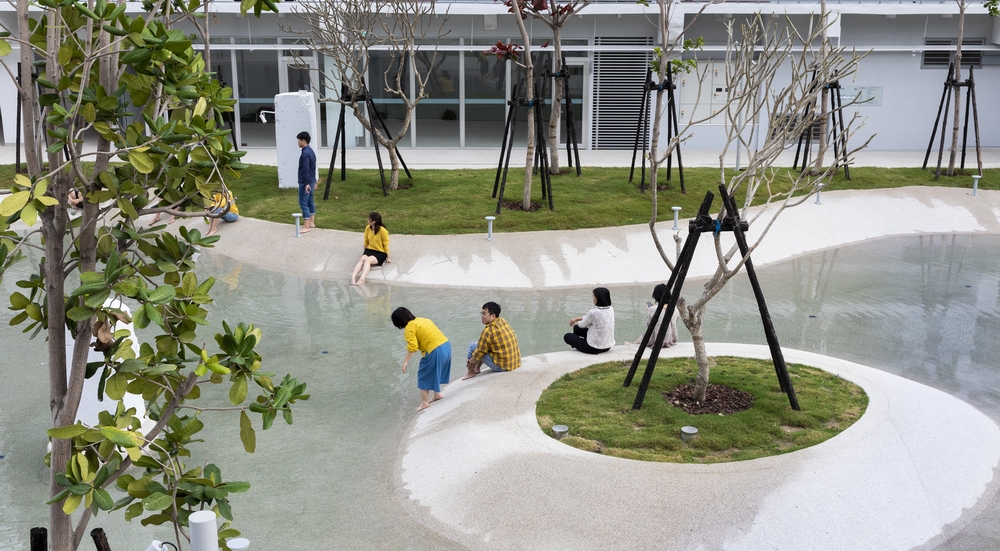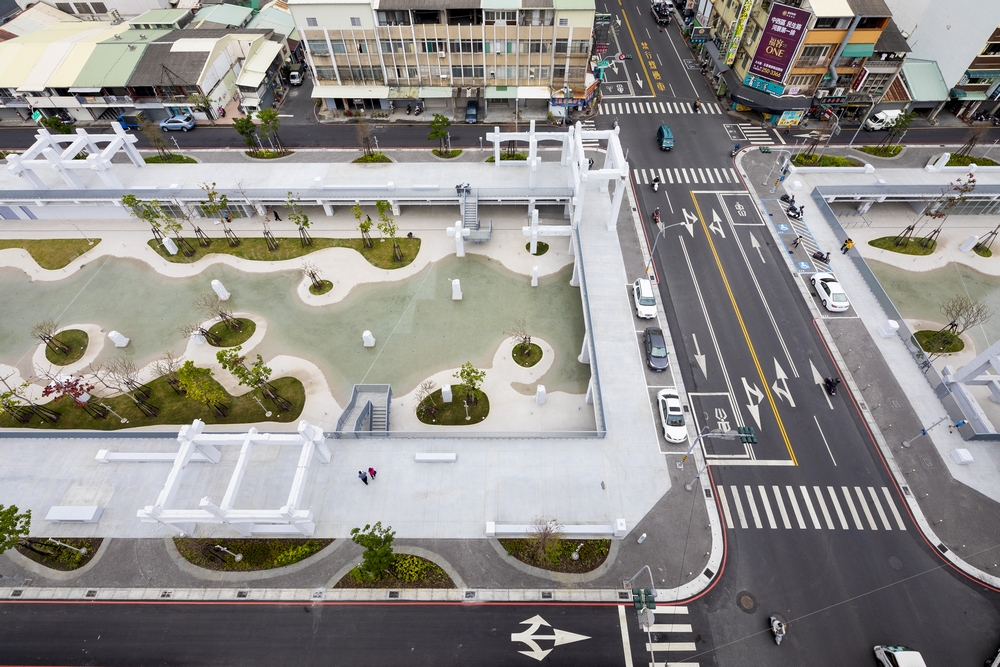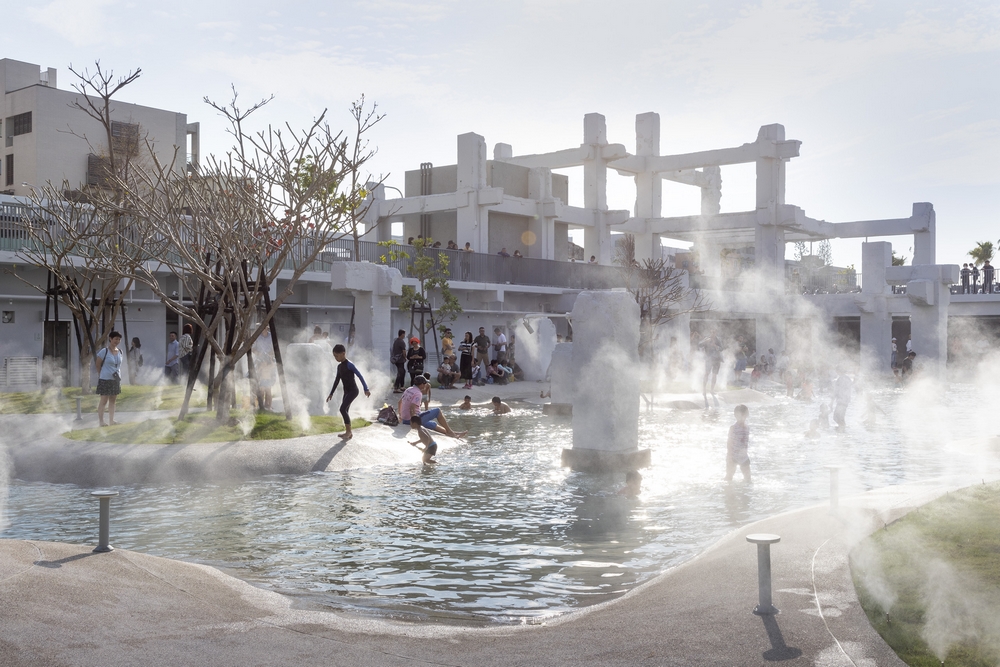Tainan Spring, an exemplary brownfield site recovery in Taiwan
This original landscaping project in the taïwanese city of Tainan proves that a second life is possible for brownfield sites.

In Taiwan, the city of Tainan has transformed a former shopping mall into a vibrant public space in which visitors paddle through lush vegetation. This highly original landscaping project proves that a second life is possible for brownfield sites – a challenge facing all public authorities.

© Daria Scagliola
The reason for this landscaping project : the economic decline of one of Tainan’s districts
Tainan is the oldest town in Taiwan and the country’s 4th biggest metropolis. Historically it was a major port until overshadowed in the Sixties by its booming neighbor Kaohsiung.
During “Taiwan’s economic miracle” in 1983, the China-Town shopping mall was built on the old port. But twenty years later the mall was obviously obsolete. Slowly the shops all closed except for some karaoke’s and cheap clothing stores. China-Town became derelict and the landscape, pitted with a host of ventilation shafts and encumbered by traffic jams, did not encourage locals to use the space.
To revitalize this unattractive urban area, the Tainan municipality adopted a large-scale project to rehabilitate the old shopping center and relook the surroundings. The plan included rerouting the road traffic and transforming the ventilation shafts. The town consulted the Dutch architectural agency MVRDV who delivered their project in 2020. MVRDV had previously designed the Part-Dieu shopping center in Lyon, France!
From a brownfield site to an urban jungle
Called Tainan Spring, the landscape planning project involves 54,600sq.m. and cost 4.7 million euros. What makes it different is that it will use some of the structures of the old shopping mall. This green space is centered on an urban lagoon, a green jungle and the reconfiguration of a portion of the road near Tainan Spring. The objective is to create, in the long term, a place for swimming and strolls in the middle of authentic ruins overgrown with lush vegetation. A tribute to the tropical and maritime origins of the city!

© Daria Scagliola
Read also: When landscaping and transport networks join forces
Plants everywhere!
One of the major objectives of this project is to turn this brownfield site into a garden full of plants. The plants chosen are essentially local and are mingled together so that in two to three years time they will grow like a subtropical jungle. Controlling the density of this jungle will ensure that the public can continue to access the whole park problem-free. Without forgetting the many benefits plants contribute to green urbanism!
Back to the water
The underground car park of the shopping mall has been transformed into a vast paddling pool to keep visitors cool. The public can relax there and children can have fun in the adventure playgrounds with their feet in the water. The arcades of the old building have been conserved to provide shade. The water level varies with rainfall and misters will help to fight heat waves in the urban area.


© Daria Scagliola
Tainan’s past – and future
To conserve its heritage, the municipality of Tainan has decided to preserve part of the structure of the shopping mall. In addition to several sections of wall, MVRDV has installed a glass floor so that strollers can look down on the basement of the former commercial heart of the city. Tainan also hopes to renew life in the port with a host of small kiosks and shops set up in dedicated alcoves, as well as the creation of spaces for meetings and a stage.
This huge project is part of an overall civic vegetalization policy for sustainable town planning. In 2016, it opened a vast open-air market with a covered roof. Their aim is to become a green city with the introduction of a sustainable development plan. An inspiring example for public authorities wondering how to rehabilitate their brownfield sites!

